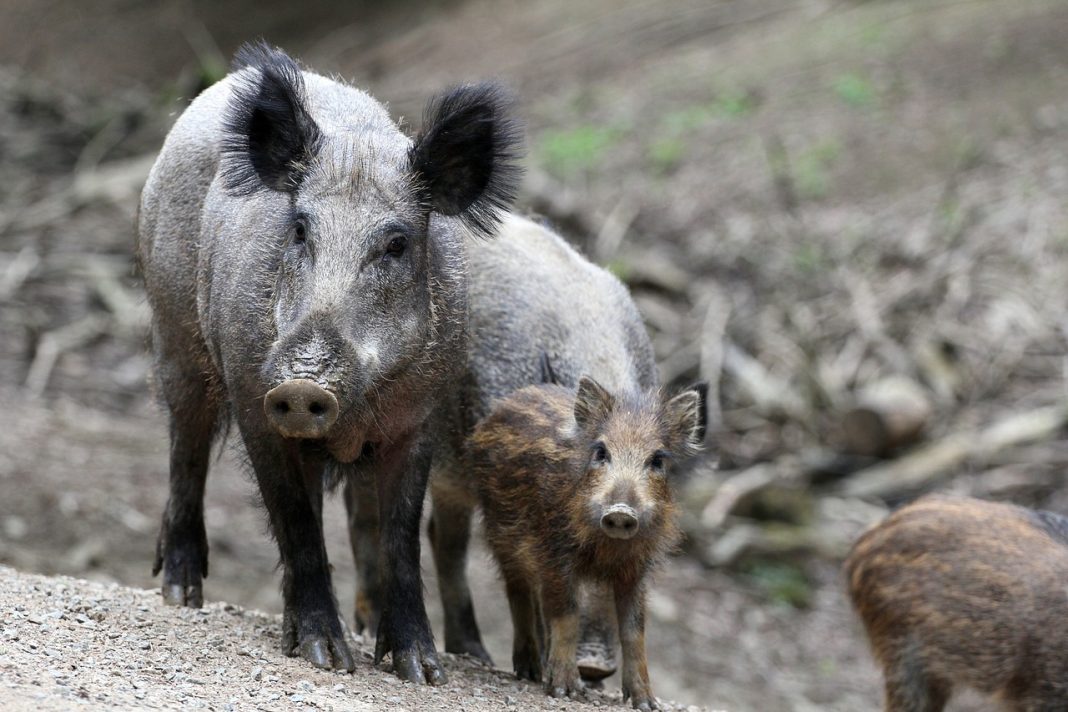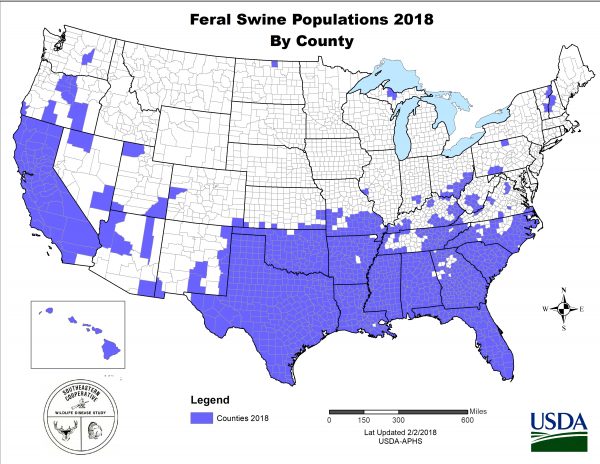Feral hog statistics are alarming. You can call them wild pigs, feral hogs, razorback or a host of slang names but they all equate to bad news. While feral pig problems are expanding in several states, Texas is by far the king of wild pigs in the U.S.
Because they are an invasive species, and excessively destructive, several states have no prescribed season or method of take regulations. Earlier in 2019, Texas passed House Bill 317, permitting hog hunting without a license. Also in 2019, the USDA launched a feral swine eradication program. Montana has even recognized the wild pig problem by denying the hog hunting business in their state.
Read about hog hunting regulations by state before you participate.
STATISTICS
- Over half the population of feral hogs in the U.S. reside in Texas.
- 66% of feral hogs in Texas must be removed annually just to break even.
- Males are sexually mature at about 6 months old.
- Females are sexually mature at about 11 months old.
- Females can birth two litters of 3-8 piglets every year.
- Feral hogs are omnivores. They will devour turkey nests and deer fawns.
- Males average 200 -300 pounds and about 3ft by 5ft (height/length).
- Males are typically 5-10% larger and 20-30% heavier than females.
- Generally, pigs in the wild can live to 4-8 years old.
- Daily, feral hogs consume 3-5% of their body weight in food.
- Top running speeds come in at 25-30mph.
- Feral hogs can jump over 3ft fences and climb 5-6ft over fences.
Scientifically named Sus Scrofa, this term and others refer to any pig breed or crossbreed that lives as a wild animal, not on a farm. Historically, even prehistorically, wild pig species originated in Europe and Asia. In the U.S., wild herds are most common in the southeastern states but can be found in across much of the country.
Resources used:
Wild Pig Info by Mississippi State University
Coping With Feral Hogs FAQ by Texas A&M AgriLife Extension
Susan Himes, Texas A&M AgriLife Extension
















